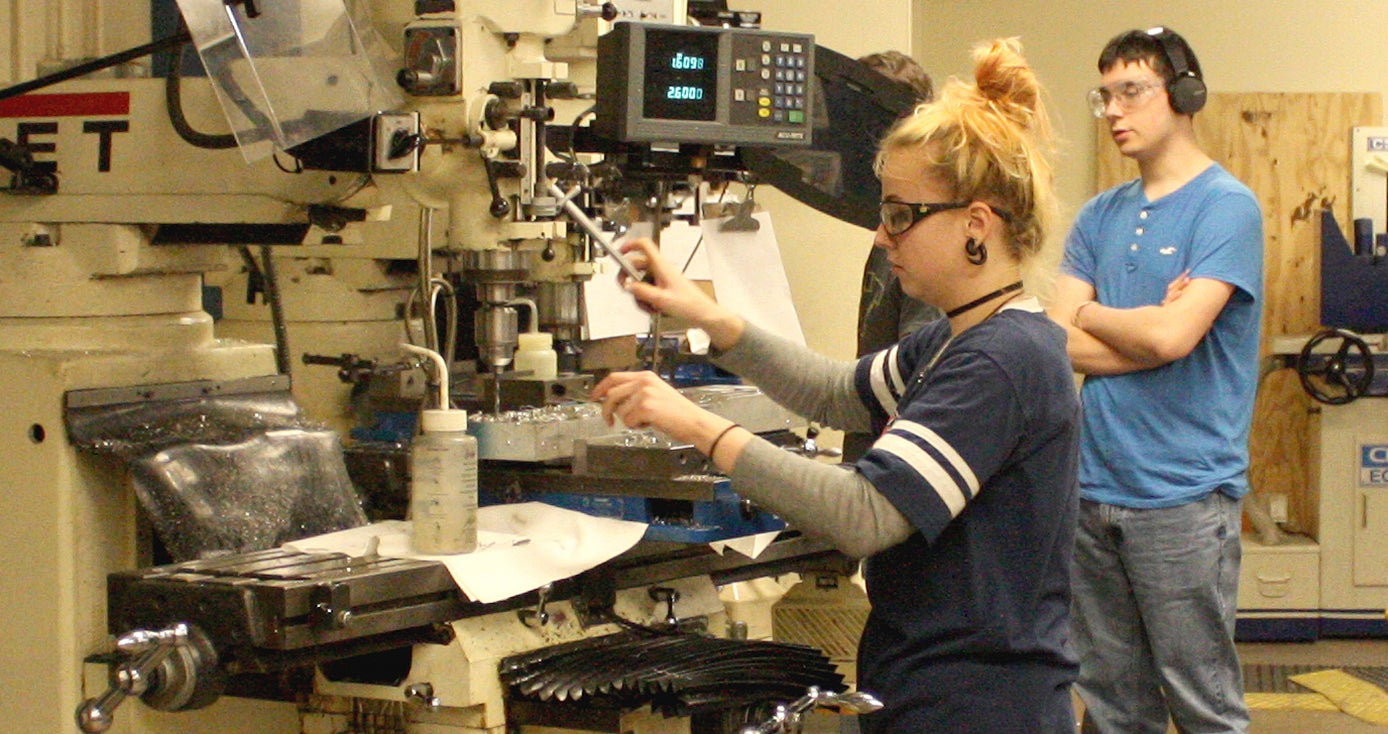
Subscribe to Pittwire Today
Get the most interesting and important stories from the University of Pittsburgh.Engineering Program Helps People With Disabilities Advance Professional Development
Inside the Human Engineering Research Laboratories (HERL) at the University of Pittsburgh, visitors may notice architectural details that are out of the ordinary.
Large doorways that allow wheelchairs to pass through easily. Diffused lighting that minimizes the chance of headaches for those with traumatic brain injuries. Flooring that doesn’t hinder wheelchair movement. They’re meant to help students with physical disabilities and cognitive impairments who take specialized training courses through HERL’s Advancing Inclusive Manufacturing program.
Applying to Advancing Inclusive Manufacturing
The fall term is already in session, but the Advancing Inclusive Manufacturing program also has spring and summer cohorts, which usually have three to four students each.
Applications are now open for the spring cohort, which begins in January.
Students who successfully complete the program receive a Basics of Assistive Technology Fabrication Certificate from the Human Engineering Research Laboratories and are ready for on-the-job training experiences at local companies.
See HERL's website for additional information and applications to the program.
The program helps college students with conditions such as paraplegia, epilepsy and autism transition to careers in machining and engineering, as well as advance their personal and professional development. The program was one factor in HERL’s induction into the Susan M. Daniels Disability Mentoring Hall of Fame for 2017. HERL was one of five organizations inducted into the hall, established by the National Disability Mentoring Coalition.
Students in the program undergo 12 weeks of training, learning the fundamentals of fields like electronics, welding, carpentry and prototyping, among others. Students can also give input on and study ongoing mobility-improving projects at HERL. Using principles learned from the training program, students can move on to independently design, develop and evaluate their own products.
“We do a lot of really good work here,” said Josh Marino, an education and outreach coordinator at HERL. “If you step back and look at it from a wide angle, you can see the progress that HERL is making. We encourage the students to take part in regular lab meetings to see how the process of project development works.”
HERL works with teachers and instructors from the Hiram G. Andrews Center in Johnstown, Pennsylvania, to identify individuals who might benefit from the program. HERL also works to tailor training to the needs of those from the center, which helps individuals with disabilities gain employment and independent living skills. Individuals outside of the center are also accepted into the program.
Marino’s own background helps him in his roles as on-site educator, counselor and advocate for students in the program. He is a U.S. Army veteran who sustained traumatic brain injuries in a mortar attack while in Baghdad, Iraq. He also developed post-traumatic stress disorder as a result.
In 2014, Marino entered HERL's ELeVATE program, a summer program designed specifically for veterans pursuing higher education. He later enrolled in a master's program in clinical rehabilitation and mental health counseling in Pitt’s School of Health and Rehabilitation Sciences while continuing part-time at HERL as an intern and budding researcher. After his 2016 graduation, he was hired full-time at HERL.
The students also work alongside Pitt research teams on select engineering projects, including with the School of Health and Rehabilitation Science’s Department of Rehabilitation Science and Technology.
One of these innovations is the PneuMobility project, which makes assistive mobility devices that run solely on compressed air, making them less cumbersome and waterproof.
Another is the Strong Arm, a specialized wheelchair attachment designed to help wheelchair users more easily transfer in and out of their electric-powered wheelchairs to other surfaces like chairs and beds. Caregivers need only to push a handle at the end of the arm to assist the user.
The program’s focus on inclusiveness for all its students has led to innovations that can accommodate students’ needs and encourage full participation. In addition to architectural aspects promoting accessibility, the student spaces include other specialized features: Wiring inside the main conference room’s baseboard helps transfer sound to individuals who use a hearing aid, and walls in some rooms can be written upon, allowing students to draw equations and figures to express their creativity and thinking skills more freely and visually.
One former student who said she has benefited greatly from the program is Chelsey Young, who was a student in the program in 2015 and has also served as a teacher and shop supervisor for the program.
“As long as I can make other people happy, it makes me fulfilled at the end of the day,” Young said. “I put everything into my work.”


